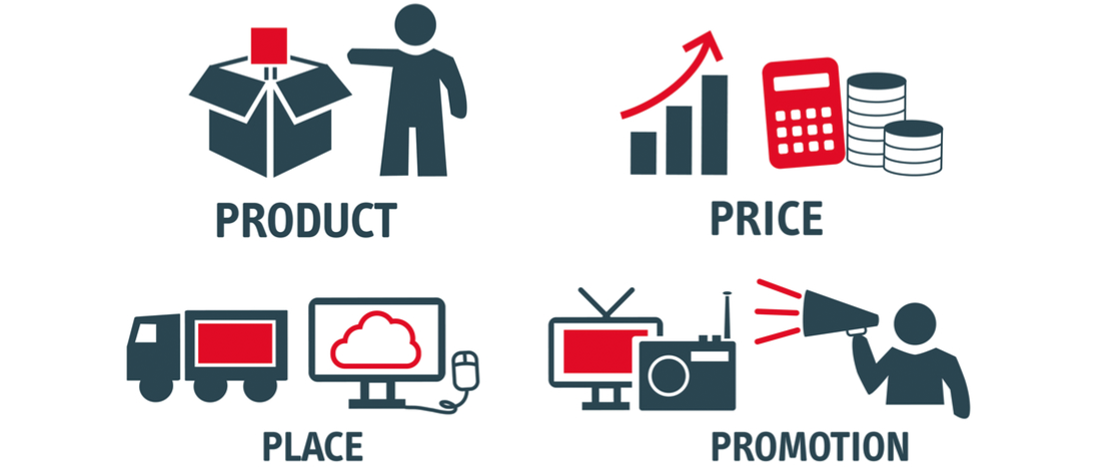In the 1960s, a marketing professor and author called Edmund Jerome McCarthy came up with the foundational marketing model of the 4 Ps marketing mix. The concept had been knocking around since the 1940s as a kind of alchemical analogy for all of the ingredients required to formulate the perfect marketing strategy, but McCarthy modernised it and applied a more in-depth managerial approach that takes into consideration elements such as consumer behaviour, segmentation and market research.

Philip Kotler defines the marketing mix as a "set of marketing tools that the firm uses to pursue its marketing objectives in the target market”.
Sound familiar?
If you went down the tertiary education route to marketing, you would have undoubtedly encountered a variation of the marketing mix, and it may very likely have been this one.
So if the concept is still enshrined by educational institutions, it begs the question: Do we as marketers actually apply it in 2019?
If you’re not too familiar with what the 4 Ps stand for, here’s a quick overview:
Product:
The tangible or intangible offering your business proposes to sell in order to meet the needs and wants of the customer.
From a marketing perspective, you have to conceptualise the product’s design, branding, packaging, associated after-sales services and its overall life-cycle.
Price:
Deciding how to price up your product or service is a multi-dimensional equation that takes into account what the perceived value of your offering is for the customer.
Before making any other moves in the marketing mix, you must ensure that you can generate worthwhile revenue from this venture. You have to have a solid pricing strategy that encompasses sales tactics and factors in your business’ payment terms.
Place:
As a marketer, you will have to pinpoint the most convenient location for your customer to access your product or service. Your marketing strategy needs to factor in distribution, logistics and market coverage.
Promotion:
How are you going to get your message out to your target market and what channels will you use?
The promotional element of the marketing mix is where you leverage advertising, PR, direct marketing and sales promotion to reach your target audience.
Why the 4 Ps are significant
The 4 Ps have mattered to marketers throughout the decades because they helped to propel theories away from the functional school of thought which was somewhat reductive and predominantly concerned with the superficial functions of marketing. In other words, what extra gimmick can we employ to push these products off the shelf?
McCarthy’s 4 Ps engage a more profound perspective that addresses the psychological motives customers have for making a purchase, as well as how a business can problem-solve and meet challenges instead of continuously troubleshooting and firefighting.
Applying this concept to the marketing strategy obliges businesses to consider the variables that are within their control from the very beginning, potentially sparing a lot of unnecessary expenditure and meeting customers’ needs far more adequately.
The 4 Ps and digital marketing
Taking a more comprehensive look at how your business creates and delivers products and services to customers is vitally important. The challenges and opportunities presented by the digital landscape, however, require businesses to review their approach to the marketing mix.
Digital marketing allows us to understand and eventually manage the expectations of customers in a way that is not only good for business but good for the client, too. By using big data, analytics tools and behaviour tracking, we are able to set far more accurate and measurable goals as well as adjust our products and services to meet the specific needs of our target market.
So let’s look at the 4 Ps through new eyes:
Product
In 2018, 17.4% of UK retail sales were made online. This means that more and more customers are forfeiting the opportunity to touch, hold, see or smell a product in-store and gage its quality or value. From a product design perspective, this means your goods have to be suitable for eCommerce, and you have to make use of digital tools to help you get your brand’s message across loud and clear.
Furthermore, regardless of whether it’s a product or service, there is a lot more pressure on business to meet the customer’s expectations regarding quality. Online reviews and testimonials influence modern shoppers’ decisions as they rely on the internet to gather information about your business. This means that the features and benefits of your product or service and the implied performance and quality you promote in your content has to become fully manifest in the product or service the customer receives at the end of the transaction.
Price
For most customers, cost determines the final decision on purchasing a product. Selling through online platforms could drastically affect your price as well as present you with new opportunities to give discounts and offers to customers through vouchers, subscriptions and exclusive deals. Digital marketing provides you with deeper insight into the spending habits of your customers, therefore allowing you to customise your pricing in order to close a deal faster.
Place
Traditionally, your distribution channels would have involved a retailer or some kind of brick-and-mortar location. This applies to both B2B and B2C scenarios.
Nowadays, you can sell your goods on giant eCommerce platforms like Amazon or eBay; or, you could sell directly from your own website. Whether it’s subscriptions to a service you offer or physical goods that require dispatch and distribution, product placement is no longer as straightforward as getting your items on display at a retailer.
Promotion
This ingredient in the marketing mix is perhaps one of the most significantly affected by digital marketing. In past times, marketers fought for ad space on billboards, prime advertising time on TV, radio promotion and print. While many of these methods are still valid today, there is no way to accurately track their contribution to the success or failure of your marketing campaign.
With digital marketing, however, stakeholders can now be presented with data which succinctly portrays where your leads are coming in from and how your promotional efforts are performing in terms of accruing engagement. This can be achieved by deploying digital marketing tactics such as email marketing, paid media, social media and building up your content assets. All of these tactics provide your business with measurable data that allows you to evaluate and tweak your campaigns, ensuring that your message really is targeted to the right audience at the right time.
Moving on from the 4 Ps
For your revenue to grow, you have to look way beyond the elemental aspects of developing your product or service. In the digital marketing age, great ideas need great strategies in order to take flight. These strategies should always put your buyer persona at the forefront of any decision you make, and you have to have a good grasp of how to engage that particular audience.
Engagement should be a driving force for your marketing efforts; it’s no longer as simple as creating the right product at the right price, positioning it in the right location and promoting it using TV or print media advertising.

The 4 P marketing mix model is, as you can probably tell, all about pushing the product – and this is what many businesses unwittingly fail to acknowledge. Through inbound marketing, however, you can focus on attracting customers to your business instead.
This is great for many reasons, one being that it creates a helluva lot less buyer’s remorse for your customer and a much healthier relationship that allows you to upsell in the future or gain more customers through a positive public perception of your business.
Modern consumers want to be educated about what they are purchasing so that they can make the best possible choice for themselves, their families or businesses. That’s the kind of sale all companies should be looking to make because when your clients don’t align with your core business values, you run the risk of creating unnecessary friction and potentially end up having to compensate unhappy customers.

McCarthy left us an irrefutable framework to work from, but it needs supplementation to serve a purpose for present-day businesses. With this in mind, the marketing mix has, of course, been revisited and expanded upon by many marketing theorists over the years.
Really, what it comes down to is: How is your business going to differentiate its value proposition in a way that authentically engages your ideal buyer persona and drives them towards a purchasing decision?
Combining the elements of the marketing mix with a solid inbound digital marketing strategy is the best way to address this question.
Create high impact inbound marketing campaigns with this free guide.
Download a step by step guide that is proven to generate leads.
Stay Updated with Our Latest Insights
Get expert HubSpot tips and integration strategies delivered to your inbox.



